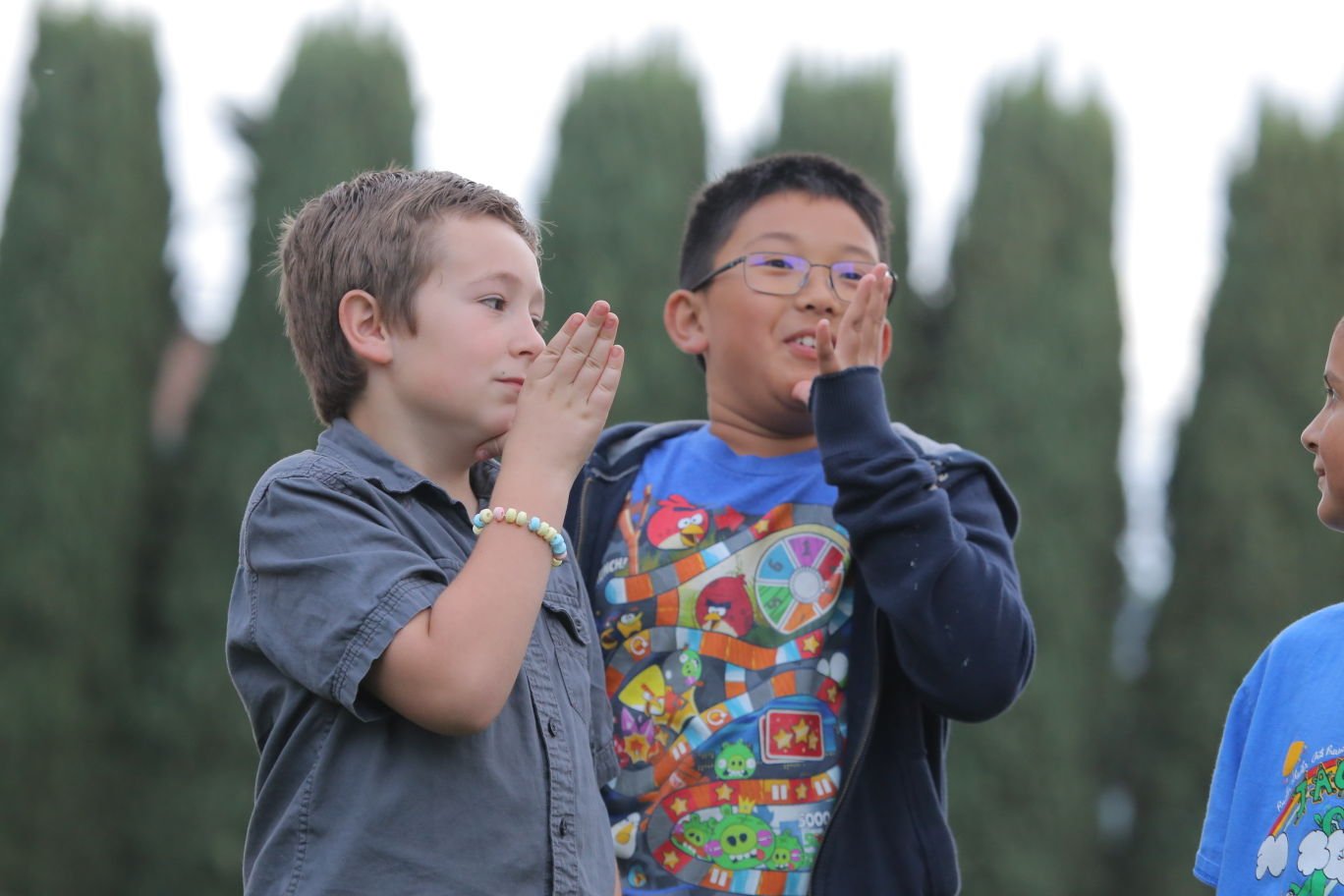
GILROY—Johnathan Spencer, 9, was all smiles as he and schoolmates practiced sign language at Gilroy’s First Baptist Church Tuesday evening.
But the smiles belie a tough reality—Johnathan in 2010 was diagnosed with what’s called “childhood Alzheimers,” a rare and fatal genetic disease for which he is undergoing experimental treatments that can cause hearing loss, even deafness.
Spencer’s parents aren’t sure he’ll live to see his 15th birthday.
The boy suffers from Neimann-Pick Type C1 disease. The sickness prevents the body from metabolizing cholesterol in the body and brain. As cholesterol and lipid levels increase, brain function declines causing movement disorders; ultimately, patients lose their ability to walk, talk, eat and breathe.
But doctors at the National Institutes of Health in Maryland have injected Johnathan and 13 other patients with cyclodextrin, an experimental drug it’s hoped will help.
It has been injected into the Rucker Elementary School student’s spine every three weeks for the past year.
In the first human trials of the drug, awaiting FDA approval, doctors want to triple Johnathan’s dose in hopes the medicine speeds the body’s ability to expel cholesterol, potentially buying Johnathan time.
When doctors at the NIH told the family that cyclodextrin has caused hearing loss in other patients and could dampen his hearing, Johnathan had a breakdown, according to his mother, Rebecca Spencer. He told his parents he didn’t want to lose his hearing.
And so they got creative.
“The only way we got him to feel not so scared about this whole thing was to tell him his friends will do it with him,” his mother said. She reached out to a longtime friend and sign language instructor, Kulia Lemus, and asked if she would lead a class for Johnathan and his friends.
“Sign me up,” Lemus remembers saying. “As soon as I found out about Johnathan (and possible drug side effects), immediately it was like ‘what can we do?’”
She and another volunteer versed in the language led a group of more than 20 children and roughly a dozen adults in the sign language classes Tuesday.
During one exercise, Johnathan stood outside surrounded by six fellow classmates at Rucker Elementary as they made their way through the alphabet. In his honor, they began with the letter “J.”
Johnathan’s father, Keith Spencer, said he is in awe of how supportive members of the community have been—and he’s impressed the other kids are picking up the language so quickly.
The idea of having others learn sign language alongside Johnathan quickly became a reality as family friends, neighbors and others joined in the lessons.
“I want them to be able to support him and help him. They’re going to need to be his ears,” Keith said.
Johnathan will receive an injection of 1,200-milligrams of cyclodextrin on April 7—three times the dose he has been getting the past year. That means, “in two weeks, he could lose all his hearing,” his father said.
The Gilroy boy, and the others in the trial, will help determine the safety of the drug in humans before the trial is opened up to more patients, according to NIH researchers.
Since Johnathan first took part in the trial, his parents haven’t noticed many positive or negative effects of the drug but tests show cyclodextrin is removing the cholesterol from his body, but not at a fast enough rate.
The hypothesis is that by upping the dose of the drug, more cholesterol will be removed.
“It’s an experimental trial; we don’t know who is going to lose what and how much they’re going to lose,” Rebecca Spencer said. “It’s a scary thing.”
A 16-year-old girl in the nationwide trial will receive the 1,200-milligram dose of cyclodextrin approximately one week before Johnathan does, and the Spencers said they will be in contact with her to see what the drug does.
In the meantime, the Spencers plan on sign language classes every Tuesday at the First Baptist Church to remind Johnathan he’s not alone.
“They’re already signing to each other in class. I wish I could see it,” Keith Spencer said. “The one they really know is ‘I love you,’ and they keep saying that back to each other.”
“This is the most amazing community I could have imagined,” added Rebecca Spencer. “They say it takes a village to raise a child, but it takes a village to cure a child. It’s true.”













